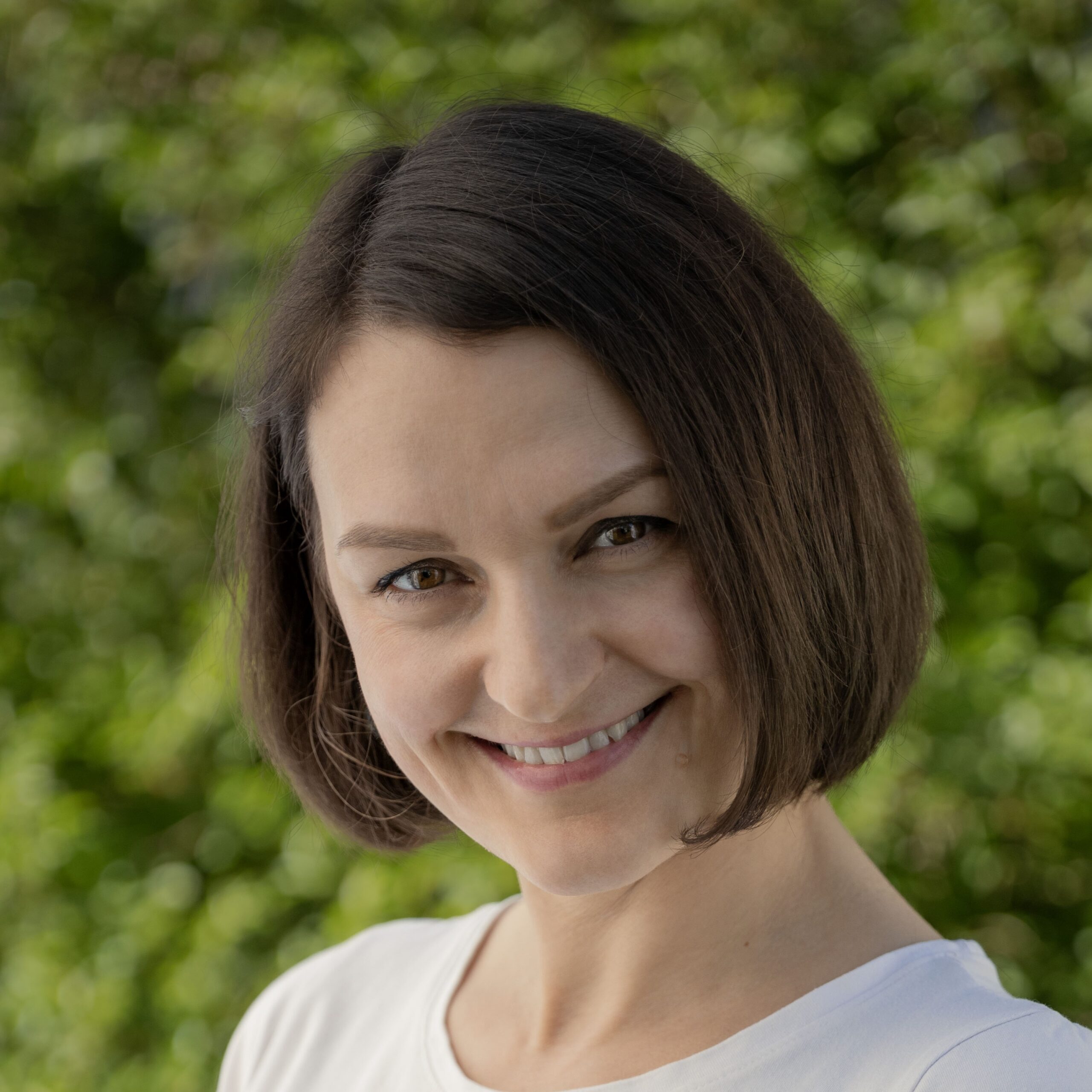Ing. Žaneta Milošová, the leader the GreenScan company, which she co-founded and which promotes the freedom of choice and the right to information for every consumer. She graduated from Chemistry and Environmental Technology and Environmental Engineering at VSB – TUO. She’s always been trying to find a balance between nature and the modern world, which her activities illustrate quite well. One example is the GreenGate project. She is dedicated to advising, raising awareness and educating about the harmful substances around us.
Does your position affect you at all? By that I mean do you avoid certain substances if you know what negative effects they can have?
Žaneta: My position has a major influence on me. I have a long-term interest in everything that happens around us and how it affects us and the environment. I don’t eat meat, when finances and my knowledge allow me to I try to choose and buy everything consciously, i.e. where does the product come from and what is it made of? What to do with it when it’s used up and so on. I like to shop in thrift shops, I think of it as a cost-effective and eco-friendly solution to my dressing needs. I minimise plastic products, I try to cook with fresh ingredients from the garden, I try to buy locally (eggs from neighbours, milk from the man in the village next door, the same with nuts and so on… I got an old bike that was going to be thrown away, it was repaired and I can cycle into town when I’m on my own or with my daughter and so on.
We moved to a village where we have our own garden including fruit trees and I certainly don’t sanitize anything at home with conventional means. I do the laundry with soap, in laundry slime… I use solid shampoo, but sure, we also have concentrated shampoo for visitors or men. I make my own windshield washer water or cosmetics… I try to pass on the knowledge where there is interest (through consultations, seminars, workshops and lectures for various organizations and individuals).
So yes, it is not 100%, but my position has a huge impact on me, which is good. I see it very positively.
Dyes in cosmetics, how do you perceive them? Are they useful for example as preservatives, or do they just dye :)?
Žaneta: Dyes in cosmetics and other products are and are not important. It depends on what the product is, if we are talking about decorative cosmetics (i.e. eye shadow, nail polish, etc.), then the dye has an important role. If we’re talking about shampoo, lotion, washing powder or dishwasher tablets or toilet cleaner… to me that’s redundant. Do we really need to have a purple shampoo, red and blue toothpaste or some kind of blue toilet shapes? And for what? To me it’s a waste and unnecessary polluting. We have dyes like CI + number, e.g. Cl 42090… In my opinion, it is not even ok to use carmine, i.e. cochineal or the food dye E 120 – as it is made by intentionally killing nopal worm bugs, and I am certainly not in favour of that. Of course, more humane dyes can be used, such as dyes from beetroot, spinach, turmeric, etc. Also, e.g. Titanium Dioxide known as Titanium White, widely used across industry (paints, varnishes, pharmaceuticals, cosmetics, food)… until recently used with the claim that it was safe. I think it wasn’t until February 2022 that it was finally banned in food. Interestingly, it can be used elsewhere until the manufacturers come up with a replacement. Like sure, you take a pill once in a while (hopefully), we also only slather on sunscreen occasionally, but toothpaste? We use that a several times a day. For me, it’s about more than that… so the toothpaste won’t be incredibly white, so what? Who honestly has a problem with that? It seems the manufacturers have the biggest problem.
So titanium dioxide has been considered safe for decades and suddenly it’s banned in food. Is this how it always works? That first a substance is tested in “practice” on people and then suddenly a big discovery and a ban?
Žaneta: More or less so. Unless it is found right away that e.g. the manufactured ingredient or combination of ingredients are CMR (carcinogenic, mutagenic or toxic to reproduction) right away in testing. Then it very often happens that these or other negative effects become apparent later, when the substance is already in circulation – in products. This does not take a week, but years, sometimes decades. So, basically, we, as consumers, are testing it.
Well, who is responsible if something turns out to be an endocrine disruptor or a carcinogen?
Žaneta: Good question, unfortunately, most of the time, no one is. It’s very hard to prove that you have skin cancer from wearing sunscreen of a particular formula, or you have stomach cancer because you eat candy with such and such ingredients, or that you have breast or uterine cancer because you use a setting powder or a deodorant… It’s not easy but think of all the things we come in contact with every day, hundreds/thousands of substances. So proving that something is carcinogenic to humans, or that some endocrine disruptor like PFAS or phthalates and the like cause infertility or some defect, can of course be inferred from some mathematical models or testing, but not always. Often fish or other animals are tested in the wild or in the laboratory after the ingredients have been put on the market. Someone must have noticed the links too: smoking – lung cancer, the Johnson & Johnson case – ovarian cancer from the use of talcum powder (in children and adults). It was only in 2023 that they stopped selling this talcum powder (containing asbestos). Thousands of people were compensated. (Author’s note: more on talc, the case and asbestos here). Also, Thalidomide – a drug, a sedative – given to pregnant women to help them sleep better, I believe none of them sleep soundly until today, as 17,000 babies were born without limbs or otherwise damaged. The drug has been in use since 1957 and as late as 2010 there are records of babies being born so hurt. It wasn’t until 2012 that the manufacturer officially apologized…

Picture source: https://thalidomide.ca/en/what-is-thalidomide/
Oof, nothing pleasant. So more testing certainly wouldn’t hurt. And surely someone should be held accountable in any case.
Žaneta: I agree, if I go, and I’m going to overexaggerate now, and chop off someone’s legs and arms, I’m going to go to jail for a few years and get some pretty nasty media coverage. If I do it to thousands of children, maybe an apology and a few bucks to some of the victims will be enough to stop it being talked about. Do you see anyone from the tobacco industry, cosmetic companies or pharmaceutical field sitting behind bars because they damaged the environment or disfigured or helped to kill thousands of people?
Is this true in the cosmetic industry as well? Can we say something in general? Are all preservatives bad? Parabens, BHT, Methylisothiazolinone or Bronopol?
Žaneta: In general, preservatives cannot be said to be all bad. For example, we have tocopherol – vitamin E, vitamin C, sugar, salt, essential oils or alcohol, which, depending on the application, are preferable and more suitable than formaldehyde, BHT, BHA, parabens, triclosan, etc. For instance, parabens were considered ok not long ago, but today we know otherwise. Some of the parabens or other substances mentioned are or may be carcinogenic, genotoxic or have negative effects on hormonal function (author’s note: endocrine disruptors – discussed below). It takes time before a substance is found to be problematic in relation to our health and the environment. The question is why a substance is first introduced and then, after a few years, found to be a problem.
So manufacturers can use preservatives that are not so harmful or even have a beneficial effect, yet why don’t they?
Žaneta: Money, cheap raw materials and good advertising are enough. It depends on the composition of the products, the packaging, the technology of production, e.g. lotion in a tube vs in a jar – less unwanted bacteria gets into the tube. If the manufacturer uses water, then they have to use preservatives and so on. The problem is that the manufacturer or seller does not have to state that, for example, the product contains bisphenols, phthalates, etc. And you can easily buy a perfume, a lotion in a jar containing bisphenol, a child’s toy, a receipt, a car seat or dishes, and you are exposed to these substances without being able to control what you buy. Unfortunately, some substances are unavoidable, but others are, at least partially. Legislation has been very slow to react to the situations that have been emerging.
Let’s look into the endocrine disruptors (EDs) mentioned more. Are EDs really that dangerous? How long have we known about them?
Žaneta: Endocrine disruptors (EDs) as we discuss them today have not been around for very long. Sometime around 1990, the first references to the effect of chemical endocrine disruptors on the hormonal system began. We have known about natural EDs for longer, e.g. cereal, soy, some legumes, beetroot etc. These contain so-called phytoestrogens, which are substances naturally found in plants that can act in the body in a similar way to female hormones (estrogens). Some believe that they may have some health benefits, although that is still a topic of research, and it is possible that in certain doses they may also have a negative effects. However, we have been accustomed to a diet containing phytoestrogens for millennia, but when we eat a lot of them, then it can affect us. Assessing the effect on humans is always complex during all trials… it depends on many factors, e.g. what a person eats, whether they are in contact with plastics, whether they work for example in perfumery, in the chemical industry, in a store or even in an office.
The impact on health can be significant. For example, some phthalates, bisphenols, PFAS (author’s note more about “forever chemicals” here) and other substances contained in plastic packaging, cosmetics, clothing, toys, pharmaceuticals, pesticides, insecticides (yes, even the ones you apply at home), and more, can give us a hard time. From fat deposition, asthma, irritation, allergies, to breast enlargement in men, obesity, diabetes, behavioural changes, problems with blood pressure and metabolism, infertility, cancer, to birth defects in unborn children in the body of the mother-to-be. Some of the effects on children may not become apparent until adulthood or transgenerationally. That means health problems that we do not perceive but our children or our children’s children may be affected by them.
According to studies on animals, after exposure to certain substances (ED), sex changes from male to female have occurred in mice, frogs and fish. This is not just a “forced” change, there are other influences as well, see above.
And how exactly do EDs work? I mean, I read “infertility, cancer” everywhere but what’s going on in the body?
Žaneta: The scientific data is not always completely clear and everything is being researched. For example, EDs can act like a hormone, say estrogen (primarily female sex hormone), which is responsible for the development of the sex organs in the fetus and in childhood, maintaining pregnancy, ovulation, protecting against osteoporosis, and more. Imagine you have a certain number of locks and their corresponding keys. A certain key will only fit into a certain lock. Hormones and their receptors work in a similar way. We have a certain number of receptors and they can only pick up a particular hormone. So it looks like if ED is fraudulently passing itself off as estrogen, there is more estrogen than the receptors to “pick them up”. For a particular individual, this situation is probably harmless. However, they can expel the ED which then get further into the environment where they may do further damage.
Thus, when ED mimics the function of, for example, estrogens in the body, it can have various adverse effects:
Disruption of the hormonal balance: this can include disruption of the reproductive system, metabolism and the immune system.
Problems with reproduction: in women, this can include problems with the menstrual cycle, ovulation and fertility. In men, it can mean disruption of sperm production and reproductive functions.
Abnormalities of fetal development: e.g. risk of disorders in the development of reproductive organs.
Effect on certain types of cancer: ovarian, breast, etc.
Insulin and insulin resistance: serious consequences for blood sugar regulation and overall metabolic processes in the body. Insulin resistance is a condition in which the body’s cells do not respond properly to insulin, and thus the transfer of glucose (sugar) to the cells is disrupted. This can lead to elevated blood sugar levels. Insulin resistance can increase the risk of developing type 2 diabetes.
Affecting metabolism: which can impact weight and fat regulation.
E.g. ADHD, dyslexia, autism etc – these neurobehavioural disorders are associated with exposure to endocrine disruptors and higher risks of manifestations. However, it is important to note that ADHD is a multifactorial disorder and has a complex origin that includes genetic, environmental, and neurobiological factors.
How is it even possible that products, cosmetics and everything around us can contain harmful substances? Isn’t that tested beforehand? Is this not prohibited?
Žaneta: It is tested and not tested… the tests are not sufficient. Often a company will test what is mandatory, but it is their own paid tests. So sometimes the test results may not match the reality. These tests didn’t even use to include testing for effects on the endocrine system. You couldn’t test for something that you didn’t know about. The methods are getting better, stricter, and so on. Still, as we see in practice, it is not sufficient.
For example, the above mentioned parabens, which were considered to be problem-free until recently, titanium dioxide, triclosan, BHT and so on. They are fist put on the market and then we “wait” to see what happens. We are, in effect, living guinea pigs. When the data already indicates that there is an ED or a carcinogen, for example, we wait for years more before it is 100% proven. The way it works is not to prove 100% harmlessness, but to prove harmfulness.
When a substance that has been on the market for years is shown to have, or could have, any significant negative impact on health and the environment, then the quantity is usually regulated. An example is BHT, (Butylated Hydroxytoluene) which has been used as a preservative for decades. The European Commission asked the Scientific Committee on Consumer Safety (SCCS) to review the substance due to a suspicion of ED and in 2021 it concluded, that the maximum concentration of BHT in mouthwash can be 0.001%, 0.1% in toothpaste and 0.8% in other non-rinse and rinse products. BHT is also found in foods as E 321.
Regulations are nice, but when you use mouthwash, toothpaste, lotion, shampoo, soap, cleaning products, foods, etc. with allowed amounts of this substance, daily for years, that is no longer accounted for. And that’s just one substance.
Endocrine disruptors (ED), that’s not something we would want to spread on our bread or face every day. Yet, they’re everywhere, can they even be avoided?
Žaneta: As always, somewhat you can, but it takes a little time, reading and thinking… At least you can choose something :).
What each of us can do to some extent:
- Cook at home – you know what you’re eating.
- Use as little plastic packaging as possible – especially for food.
- Avoid plastic items – especially toys, swim rings, teething toys, plastic baby bottles and nappies (which I understand is not easy).
- Use medicines exactly as your doctor tells you to and try to find (if possible) other solutions or find out the cause of your problems, for example if back pain can be solved by physiotherapy or exercise. Whether your headaches are caused by sitting at a computer or not drinking enough water, etc.
- Avoid drinks in plastic, especially the hot ones, but also those in paper (waxed/foil) cups.
- Try preserves in glass instead of cans. For example, tomato paste can be bought in jars, which you can use afterwards.
- Clothes made of natural fibres.
- Do not use non-stick cookware (e.g. Teflon) as once it is even microscopically scratched, it releases dangerous substances (you can use enamel, stoneware, stainless steel, cast iron…).
- Cosmetics, it’s hard if you don’t understand the ingredients, but you can try an app, like ours: GreenScan is completely free, take your favourite products and check them online, ask someone who understands, make your own quality cosmetics for a few bucks at home, etc.
- Food – the “fake” kind, very processed, full of emulsifiers, preservatives, etc. Cakes and the like that last a year packaged, definitely avoid that.
- Plastic bowls and jars for storing food – instead choose glass, metal, wooden or some combination of these.
- Same with drinking bottles… even those sports plastic bottles can be swapped out for glass or stainless steel.
- Cork/bamboo/wood packaging and also PC keyboard and mouse.
Other recommendations: e.g. a dental floss made of bamboo in a glass jar. Brush made of wood and sponge made of coconut shreds. Clothing made of natural fibers, especially anything related to children and where you can eliminate contact with any plastic. You can choose unpainted wood or glass, cotton and the like, it will be a step in the right direction.
I suppose we could go on for hours and hours on various topics, but there is no time for that now. Is there anything in conclusion that is worth highlighting or mentioning?
Žaneta: I would certainly like to conclude by pointing out the possibility of choice. Unfortunately, the legislation does not require the indication of what the toys or other products are completely made of. For example, they list plastic, but that is not sufficient, because you do not know whether this plastic contains bisphenols, phthalates and other dangerous substances. So if you can, choose a material other than plastic, waterproof finishes on textiles and footwear, non-stick cookware, etc.
One last thing – I know that some stores and products for a few pennies are tempting, even for me, but perhaps try buying from second hand, like a quality wooden item rather than a plastic toy even though it’s new.



0 Comments